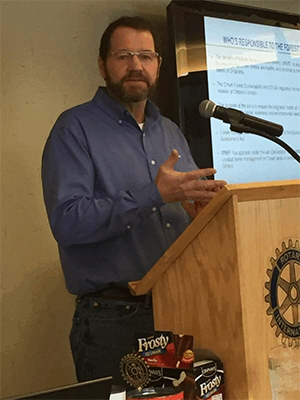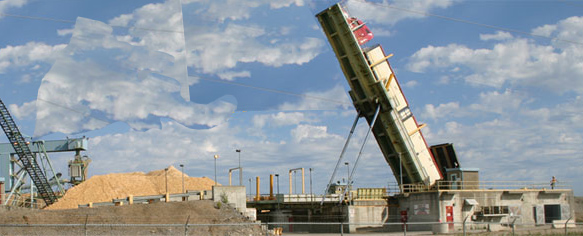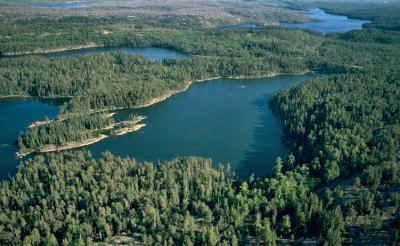Jack Harrison, the forestlands manager at Domtar, gave us an update on the woodlands component of Dryden’s pulp mill.
 A sustainable wood supply involves the interaction of the planet, its people, and the role of profit if we are to create a sustainable wood supply.
A sustainable wood supply involves the interaction of the planet, its people, and the role of profit if we are to create a sustainable wood supply.The management of Crown forests subdivides into administrative areas known as Forest Management Plans. It takes about three years to put a plan together. The planning process requires consultation with all stakeholders.
Forest managers must renew and maintain harvested areas to provide for the sustainability of Crown forests. Seven separate pieces of provincial legislation affect sustainable forest management.
Harvesting operations must now try to emulate nature. Large clearcut areas are meant to emulate a forest fire. Another reason to mimic nature when harvesting is to have the least possible impact on wildlife animals.
Harrison described the different approaches that Canada and Finland take to wood management.
Finland uses biomass for most of their heating requirements as they do not have a sufficient supply of natural gas. Also, the vast majority of Finlands wood comes from private land as opposed to Ontario where most come from Crown lands.

One truckload being dumped
The areas forestland must supply a mill with a sustainable and cost-effective supply of fibre. Ninety-two truckloads of chips are delivered to the Dryden Mill every day. Eighty percent of wood comes directly from the forest, while the other twenty percent comes from sawmills in Ear Falls, Kenora, and Bemidji, MN.
Jack supervises the Wabigoon and Trout Forests and their management plans. Future challenges facing the industry are: getting enough skilled workers, increased government regulation, natural disturbances, and climate change.
